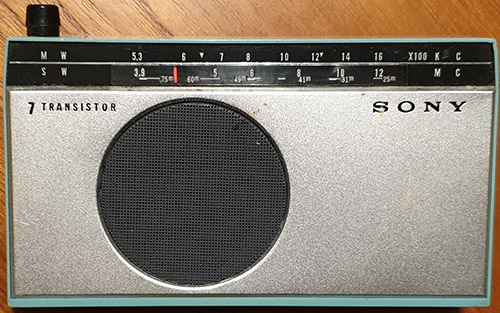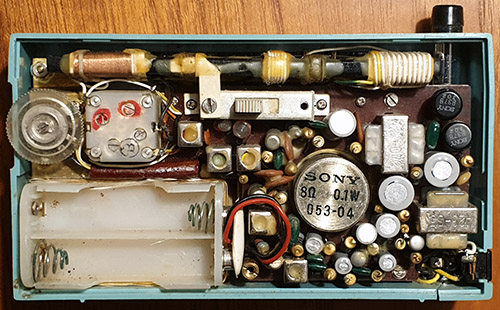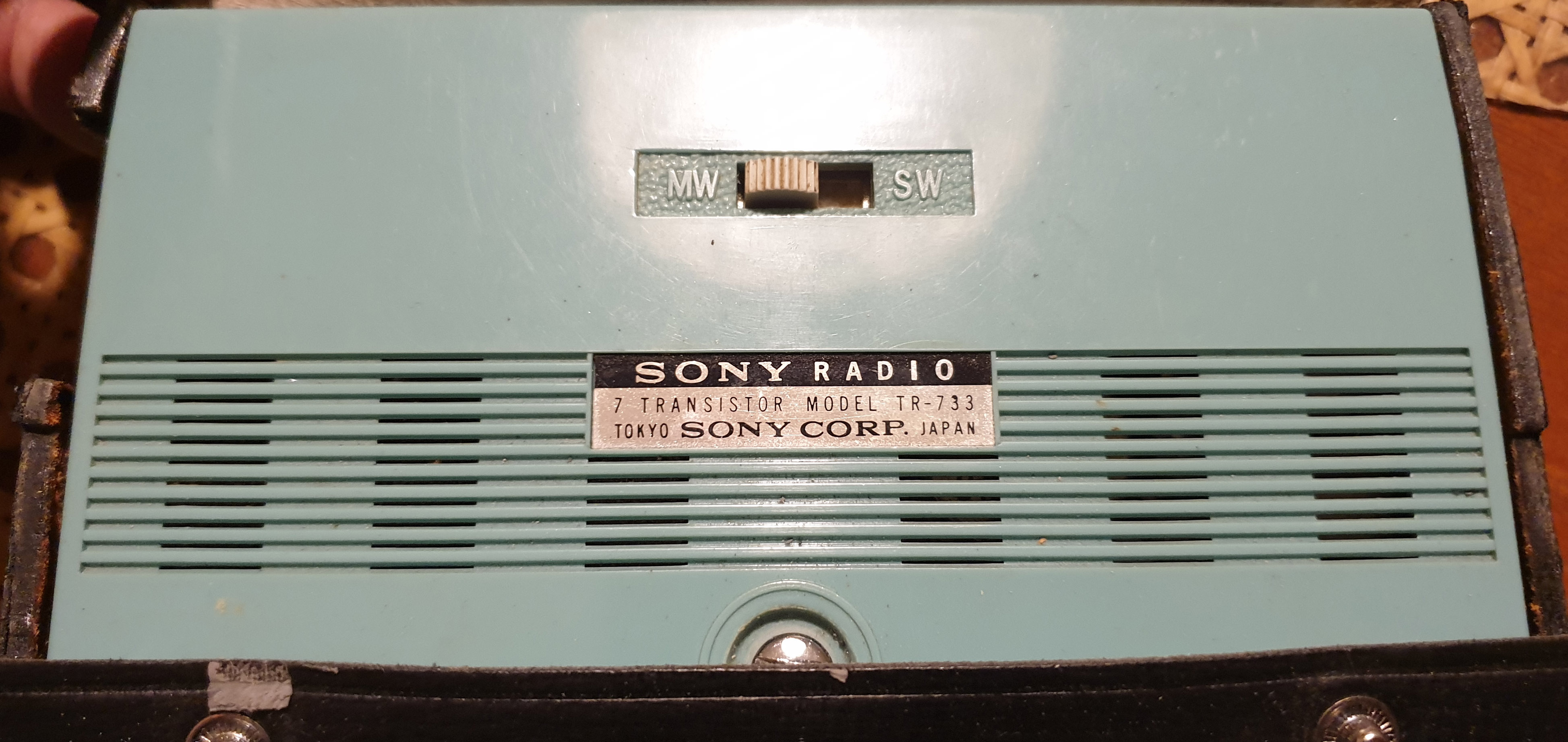The Ware for June 2023 is a Sony TR-733 “7-transistor radio” from the mid 1960’s. I’ll give the prize to Pedro Rodrigues, because even though the model number isn’t correct, as far as I can tell the portion of the electronics shown is identical between the TR-729 and the TR-733. Congrats, email me for your prize!
The main differences between the two models seem to be cosmetic; the TR-733 has a round speaker grill and a blue plastic case, whereas the TR-729 has a rectangular grill and a white plastic case. I’m not sure what the story is behind introducing a model revision with such subtle differences, but I suppose it’s probably either linked to some sort of market differentiation (e.g. regional or price discrimination), and/or a cost-down or engineering fix to improve a design issue.
It’s funny to think that around 60 years ago, we could count the number of transistors in a flagship product on our fingers. Now our handheld gadgets have … about 10 orders of magnitude more transistors in them (an Apple A14 has 11.8 billion transistors and that’s just the CPU; the ~100’s GiB of FLASH memory also counts as transistors).



Counting transistors would actually still make a lot of sense in switching power supplies, if we were to count the discrete power MOSFETs (and not the large number of transistors integrated into the converter’s control ICs).
A plain old flyback converter with one MOSFET on the primary and a Schottky diode on the secondary is becoming outdated even for applications with less than 100 W of output power, now that we widely use power factor correction, resonant topologies and active (synchronous) rectification.
Today, clever designs use more power MOSFETs than simpler topologies we designed 20…40 years ago, and all this does not even come at a higher cost, because power losses are reduced so much that we can design without heat sinks and two little surface mount transistors are cheaper than one big old TO-220. Also, a push-pull converter (including resonant topologies) uses the ferrite core of the storage inductor to both sides of the B-H-curve, while any flyback converter only uses one side and half of what the ferrite has to offer just sits there, wasting material/money when being bought and weight/volume when and after being used.
Can we please start advertising the number of active power switches for all switch-mode power supplies? Like we did in the golden days of transistor radios – or tube radios, where the tradition of counting the active components actually comes from.
P.S. I am flattered that my dumpster find made it to NTW, including some wood texture of my family’s garden table. We actually got it used from a restaurant, and it’s an original beer garden table. Speaking of German folklore.